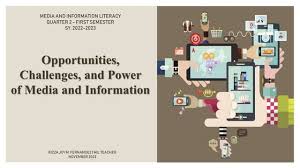
The New Frontier of Journalism
Is mobile the future of journalism? The question is now being asked with increasing frequency with the use of mobile phones in reporting, production and dissemination of news becoming more and more common. A recent survey found that about 68 per cent people use their smartphones to access news.
The news market is becoming mobile-first with content producers using platforms and formats that are mobile-compatible. Mobile videos are a rage and text and pictures are being designed to make viewing on a phone convenient.
Mobile phones are emerging as a potential reporting tool for journalists who, armed with a powerful phone camera, can now report events as they unfold in real time. The phone records details and the report can be forwarded to the office with a bit of relevant text added. This is making reporting easy.
Mobile phones come in handy in situations where big cameras cannot have access or where unfolding events take you by complete surprise. Journalists covering wars, human-rights crises, natural disasters and even political rallies that suddenly turn violent have made good use of their mobile phones.
Mobile phones, thus, are changing both the way news is reported and viewed today. No wonder mobile journalism or MOJO as some prefer to call it, has become one of the most talked about forms of journalism.
One of the first uses of content recorded with a mobile phone in journalism was during the Iraqi invasion in 2003. Codenamed Operation Iraqi Freedom this marked the first stage of Iraq War with United States leading a combined force drawn from the United Kingdom, Australia and Poland.
Footage shot on a mobile phone also kept people informed about 2004 Madrid train bombings but this type of media content production peaked with 2005 London bombing which took place underground, making access difficult for TV crews. Hence a lot of footage of the incident came from ordinary people's phones. Media organisations such as BBC received hundreds of photographs, text messages and emails from the public.
It was a moment when it seemed that mobile phones would change the course of journalism, broadcast and others. This was an example of massive people’s participation in the coverage of news. Over the years this kind of citizen journalism has evolved and come to occupy its own space in the media world. However, evidence shows that till date curious ordinary citizens armed with mobile phones have contributed only a small fraction of the content generated by media outlets.
This is primarily because media houses, especially traditional media houses, remain wary about using the unverified content coming from ordinary people. They are very often amateur eyewitnesses who send in raw, unedited material. This material not only needs heavy editing but also proper verification before use in sharp contrast to the videos or audios recorded by professional journalists on their mobile phones. They are shot, edited and uploaded from the spot in real time and can be used immediately.
There is a world of difference between an amateur and a professional using a mobile phone for reporting. One of the biggest challenges involved in making a video on the mobile is getting the sound right. This can be ensured only when the person conducting the interview stands close to the subject which is something only professionals know.
Be that as it may there is no denying the utility of mobile phones in reporting, disseminating and even consuming news. It is a cost-effective tool which will be much more in demand in journalism in the coming days.
 Ashutosh Mishra
Ashutosh Mishra







